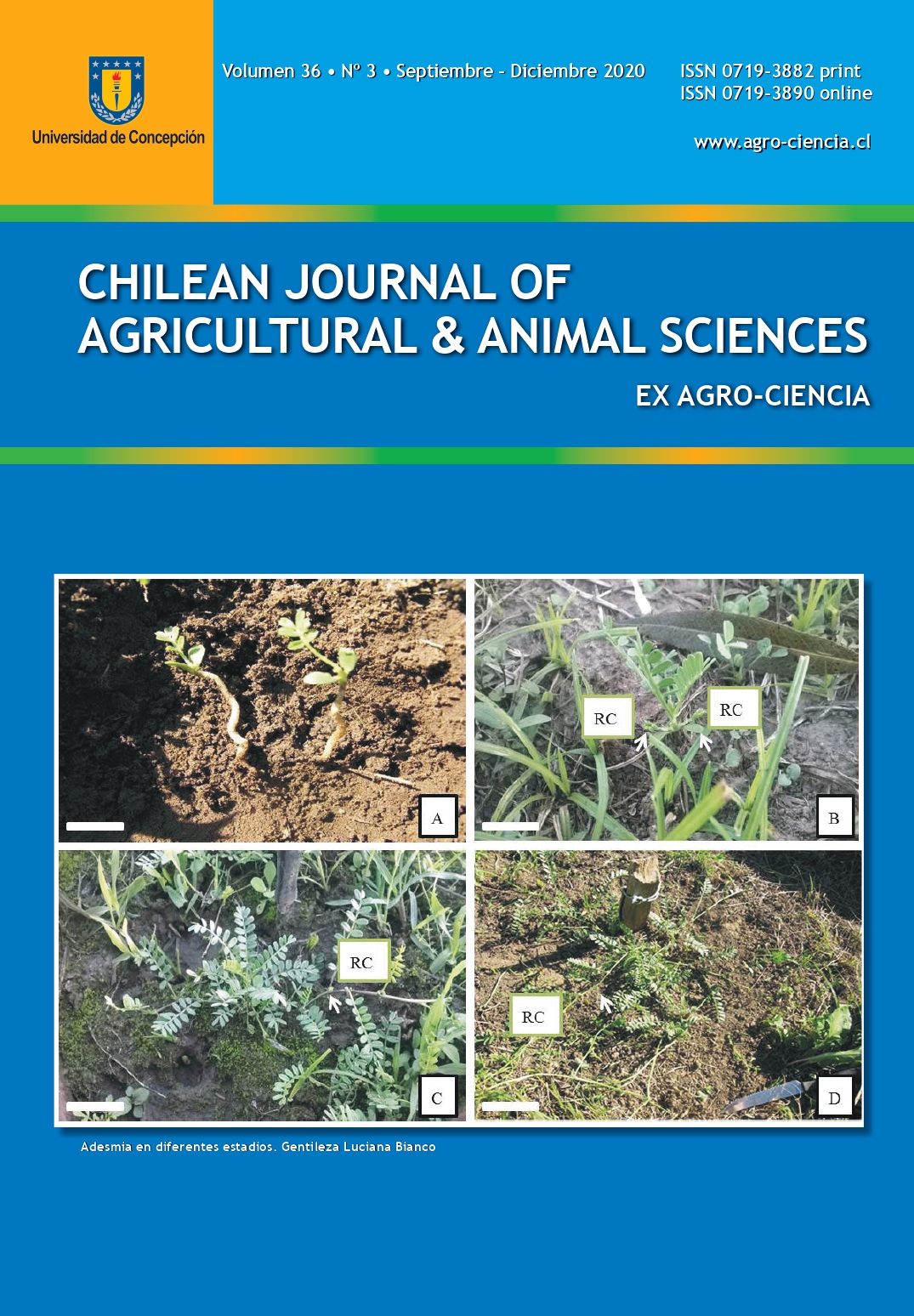EARLY CHANGES IN THE TRANSITION FROM CONVENTIONAL TO NO-TILLAGE IN A VOLCANIC SOIL CULTIVATED WITH BEANS (Phaseolus vulgaris L.)
Palabras clave:
Ecuadorian highlands, tillage, beans, crop rotationResumen
Conventional tillage (CT) is a soil management system commonly used by small farmers in
the Ecuadorian highlands; they remove the soil during seedbed preparation to eliminate weeds,
improve soil aeration, avoid compaction, and develop adequate rooting space. CT causes changes
in physical, chemical, and biological soil properties but, in the long run, have negative effects on
crop performance. Most of these effects can be avoided by using no-tillage (NT). The objective of
this study was to determine the initial effects of NT, different fertilization rates and depth levels of
sampling on yield and soil chemical and physical properties after the first crop cycle (prior to crop
rotation scheme). A long-term field experiment was established to study the soil changes derived
from the transition from CT to NT systems in a volcanic soil of the Ecuadorian highlands cultivated
with the following crop rotation schemes: beans (Phaseolus vulgaris L.)-corn (Zea mays L.)-beans and
beans-amaranth (Amaranthus caudatus L.)-beans. The results for the first crop cycle show that bean
yield was 42% higher under NT compared to CT, indicating that the soil improvements promoted by
NT had effects on crop yield; however, only the changes in pH and water storage capacity presented
significant differences, levels of soil organic matter, total N, available P, and bulk density showed a
trend towards improvements under NT. This suggests that NT allows for increased crop yield and
improved crop rotation performance in the medium and long term.
Descargas
Publicado
Cómo citar
Número
Sección

Esta obra está bajo una licencia internacional Creative Commons Atribución 4.0.







